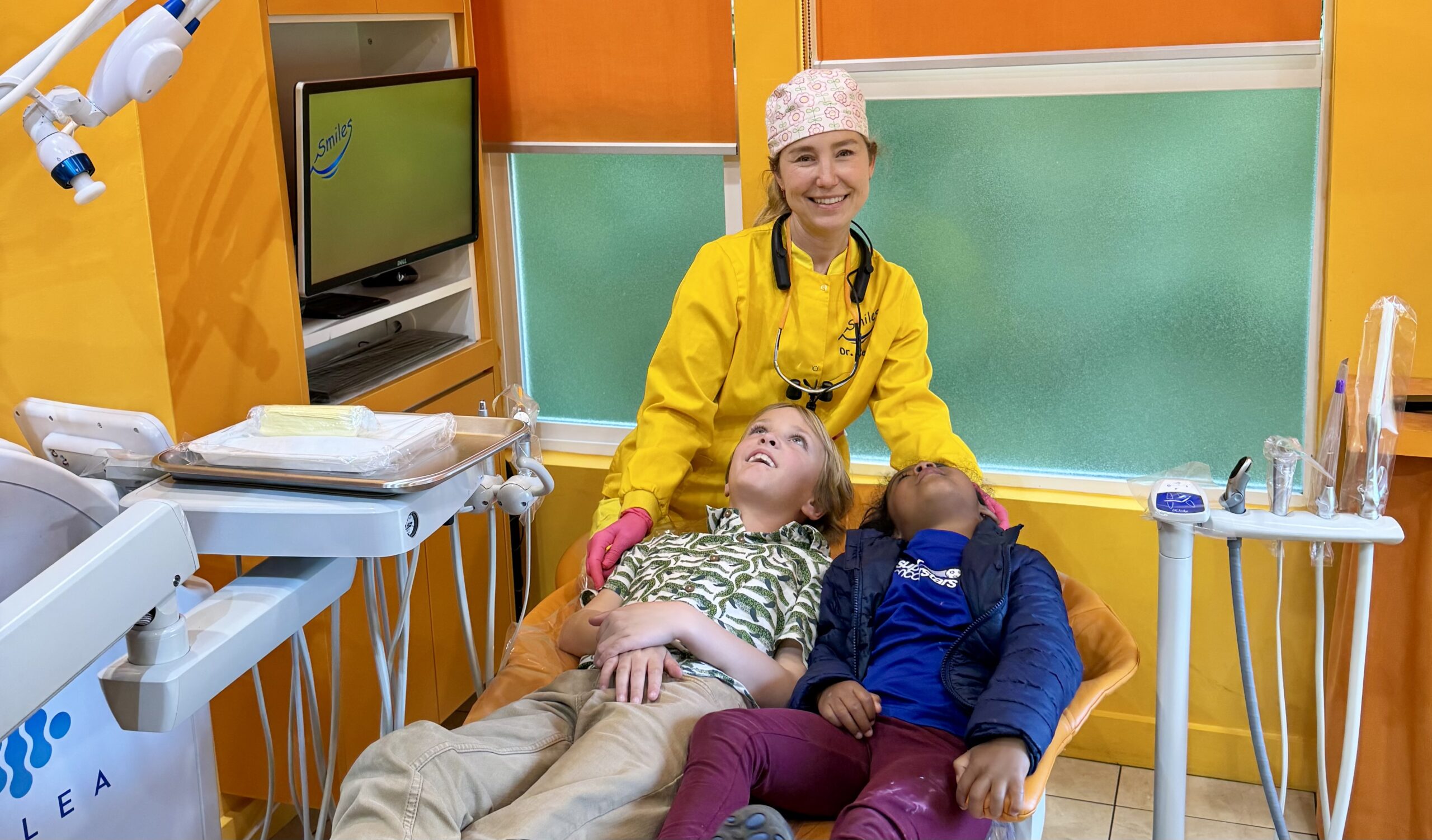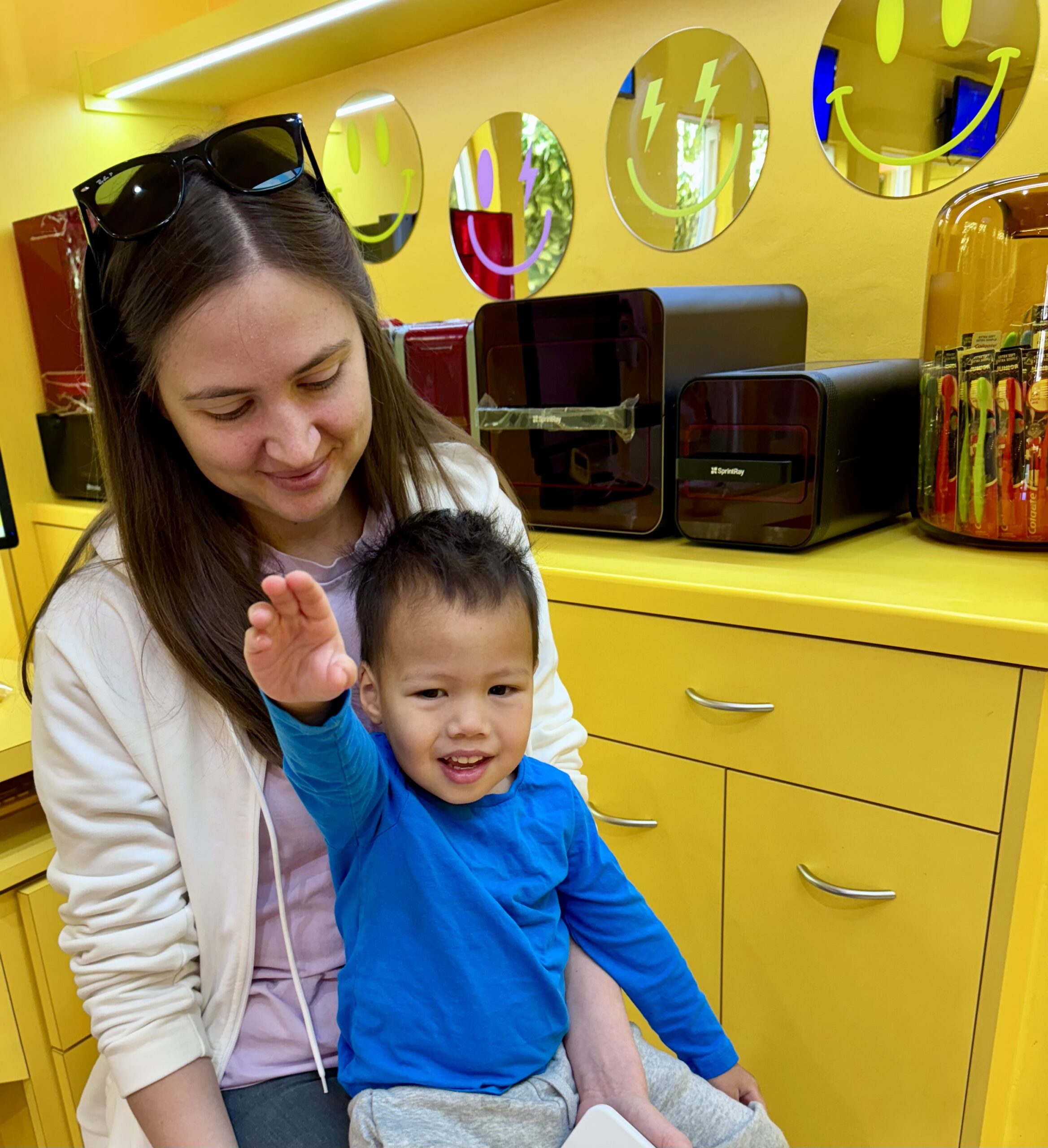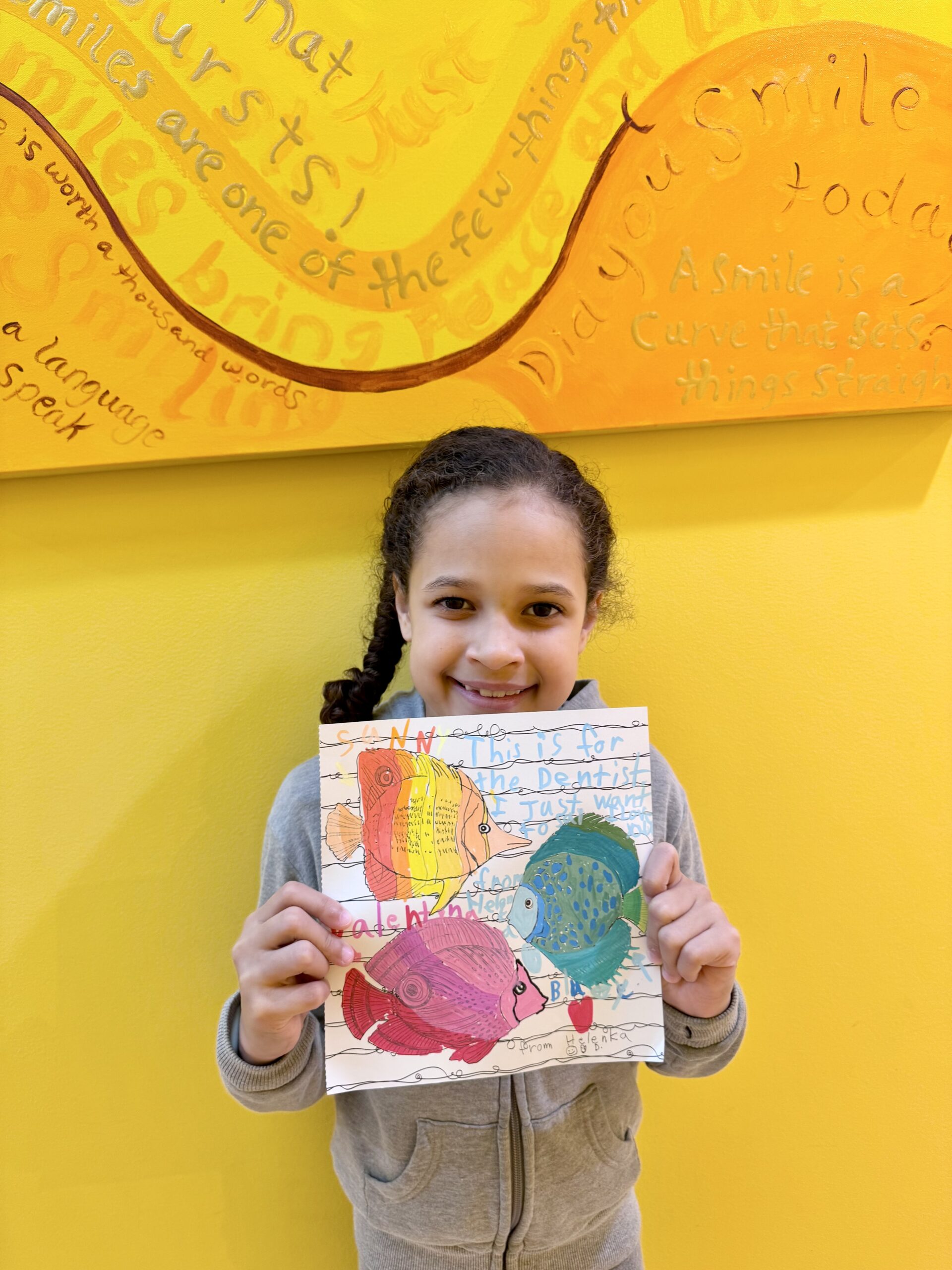Dental anxiety in kids is common, but it doesn’t have to prevent them from getting the oral health care they need. Learn the causes, symptoms, and effective ways parents and pediatric dentists can help children feel more comfortable during dental visits.
My childhood dental experiences took place in Damascus, Syria where I was born and raised. Our family dentist was a well-trained practitioner who took pride in his care. However, the encounters were far from warm and fuzzy. With a keen interest in the health field, and a desire to work in a small practice setting, I pursued a degree in dentistry, often wondering how I could make a difference in the profession. The answer came when I chose to become a pediatric dentist.
Desiring an entirely different dental experience for the kids whom I cared for, the quest of my career became focused on offering state-of-the-art pediatric dental care in an environment that is comfortable, educational and fun.
Pediatric Dentistry From Parental Perspectives:
As parents, we want the best for our children, especially when it comes to their health. But navigating pediatric dental care can feel overwhelming. It’s not just a matter of teeth. Questions like “How should I expect my child to behave at the dentist?” And, “How do I handle my child’s dental anxiety?” Can come up.
Dental visits can stir up memories and feelings for parents that may be a lot to handle. Emotions are processed differently by each of us and tend to shape how we navigate future experiences. Well-meaning parents can project their own impressions onto their child’s experience or misinterpret their behavior. This is why the availability for cultivating a bond of trust between the family and the dental team is one of the most important factors in choosing a dental home.

Parental Involvement In The Dental Setting:
When I was a pediatric dental resident at the University of Southern California, a big topic of discussion was whether parents should be invited to sit in on dental procedures or not. The older faculty members had mostly set up their practices so that parents remained in the waiting room. I remember thinking that this seemed unreasonable and that other options should be considered.
Their argument was that parents do not go to school with their children nor do they interfere with a teacher in a classroom, so why should they be part of a dental visit? With a doubt, this mindset has transformed as have parenting approaches. Fast forward years later and parents take an active part in most dental visits and procedures. For an interesting read on parenting styles and children’s behavior in the dental setting, here is a good read:
The Influence of Parenting Style on Child Behavior and Dental Anxiety
Our office has always had an open door policy. We want children to feel supported and aim to help parents be informed, and confident about their child’s oral health. That said, as a seasoned pediatric dentist, I now find myself mindfully considering the smoothest path of care for each of my patients. Sometimes, this may be to ask a parent’s permission to allow space for me to interact and communicate with their child as they watch from a short distance.
Other times, it may be in the child’s and family’s best interest for the parent to comfort their little one with hand holding or closeness. This evolution has come about from deepening my connections with families and believing that honoring children’s individuality and personal capacities is what fosters a feeling of safety and comfort in the dental setting. Here is another publication that highlights the parent-child-dentist relationship interaction:
Correlation of Personality, Temperament, and Behavior of Children in the Dental Environment
Pediatric Dentistry Through A Child’s eyes:
Being a pediatric dentist is a multifaceted path of service. On one hand, it involves a one-on-one relationship with kids and on the other, it requires collaboration and communication with the adult parent who is making decisions for their child’s care. The nature of dental services is highly personal. Working near someone’s face requires them to receive and welcome you into their personal space.
This is a lot to ask of young children and teenagers. Gentle guidance, engaging conversations and dental education help to create bonds of lasting trust. Routine dental care such as examinations and cleanings that start at a young age get children used to what to expect during their dental visits. And most importantly, positive reinforcement is a big part of looking forward to appointments. When a feeling of fun, joy and excitement is cultivated, dental visits become an experience that kids look forward to.
When Dental Care Needs To Go Beyond Routine:
In the United States and globally, dental caries remains the most common chronic disease of childhood with many children experiencing dental decay by the time they enter kindergarten. As advocates for dental health, we believe that educating families as early as possible on infant and toddler oral care is an important step in fostering dental well-being and preventing cavities from ever occurring. The next step is reversing early incidences of caries using minimally involved processes like cavity-hardening medicaments.
To further nurture positive dental experiences, we make every attempt to reduce exposure to involved dental treatments by employing the latest dental technologies, like our Solea laser . However, when complex restorations/fillings or surgical procedures are needed, it is a time to thoughtfully plan how such procedures are to be comfortably and successfully completed while maintaining a positive future dental outlook.
What It’s Like To Place A Filling In A Child’s Mouth:
To understand what it’s like to place a dental filling on a child’s tooth, Imagine having to remove a portion of diseased tissue from a human body and then carefully replacing it with a synthetic, biocompatible material that must perform and last. Now imagine that this surgical procedure is taking place on a body part that is the size of a pea and is highly sensitized with a core of nerves and blood vessels.
This body part being worked on is also situated in a dark and wet area. To top that off, the whole body is in constant motion and the environment is highly interactive. For a pediatric dentist to complete care that is successful while ensuring the comfort of the child and the satisfaction of the parent, a lot of stars need to align.
A Paradigm Shift In Understanding Dental Procedures:
When I first began my career in pediatric dentistry, I thought that I needed to have answers and solutions to every dental situation that I encountered. It took some time for me to understand that my true role is to be an educator on child dental well-being and a facilitator of gentle dental care when needed.
With this, I hope to shed some light on what evidence-based science paired with heart-felt pediatric dental wisdom can offer; allowing each family to make the decisions that they feel are appropriate for their children. If we are to believe in comfort, then we need to understand the nature of dental procedures and to be open to facilitating necessary care with the adjuncts that modern medicine offers rather than look to how dentistry was performed decades ago.
Why Sedation Options Are Vital:
Advanced dental procedures are surgical in nature. Teeth are no different than any body part like a finger, an ear or a tonsil. If a child needs to have their tonsils removed or ear tubes placed, no one in this day and age would consider completing such a procedure with local anesthesia. So why are we, in the dental profession asked to do so?
The comfort and safety of nitrous oxide inhalation sedation and minimal oral sedation are well-established. The use of deep sedation for young children with extensive needs and children with special health care needs is clearly outlined by the polices and guidelines issued by the American Academy of Pediatric Dentistry.
research on oral health policies
It is understandable that parents of young children can be cautious about proceeding with deep sedation for dental care but are we considering the alternative? Are we doing our job of fostering positive dental well-being when we subject a child to procedures that are beyond what they are able to comfortably tolerate?
American Academy of Pediatric Dentistry. Use of anesthesia providers in the administration of office-based deep sedation/general anesthesia to the pediatric dental patient. The ReferenceManual of Pediatric Dentistry. Chicago, Ill.: American Academy of Pediatric Dentistry; 2024:430-4.
At our office, we have created a sedation suite that follows the guidelines of the AAPD to ensure safety and facilitation of excellent dental care. Here is a link a video to introduce you to our setup: sedation video

The Parent-Dentist Partnership: Working Together for Healthy Smiles
A pediatric dentist is more than just a doctor. We are your partner in ensuring your child’s long-term oral health. Open communication, regular visits, and proactive home care create the foundation for a lifetime of healthy, happy smiles.
A Roadmap For Dental Wellness:
- Parental dental care: Caring for our children in love and devotion starts with ensuring that we, as parents, are taking care of ourselves. As we model good practices to our children, they will hopefully follow in similar, healthy patterns. Furthermore, scientific evidence has demonstrated that parents in dental health share healthier oral flora with their off-spring. This means that keeping our dental care in check, offers our children a better chance of enjoying dental wellness.
- Early dental visits: First dental visit for baby is when the first tooth comes in!
- Establishing a dental home: Building a bond of trust and consistency is key for fostering good communication and continued dental care for every child.
- Promoting oral and dental wellness: Teaming up in close collaboration with your dental home, let’s build dental health together!
- Prevention: Spotting any potential issues as early as possible so that solutions can be simple and comfortable.
- Early treatment: For any issues that arise, early detection means easier treatments like pain-free and anesthesia-free Solea laser care.
- Sedation facilitation: Mindful planning for comprehensive care, when needed, is key to ensuring excellent and effective treatment while maintaining a positive dental outlook.
Parental Questions:
1-My child is scared of going to the dentist. What can I do?
- Prepare them with positivity: If your dental experiences were wonderful, share that with them. If they were less than wonderful, remember that their experience can be completely different.
- Use euphemisms: Words are powerful. Words like “toothbrush”, “counting teeth”, “dental mirror” are much better than words like “pain” or “uncomfortable” or “shot”
- Read books/watch videos: Many kid-friendly books and videos show happy, relaxed dental visits. (Link to our child/teen video)
- Start early: The younger a child visits the dentist, the more comfortable they’ll be over time.
- Consider laser dentistry if treatment is needed: Technology like the Solea laser allows for a needle-free, drill-free
- Ask about sedation options: Comfortable dentistry needs to be facilitated.
2- How can I help make my child’s dental visit a positive experience?
✔ Schedule appointments in the morning: Kids are more cooperative when they’re well-rested.
✔ Bring a comfort item: A favorite stuffed animal or blanket can provide reassurance.
✔ Excite them about the experience: Talk about the movies, prizes and exciting toothpaste flavors that they can choose from!
3- My child has special needs. How can we plan for this?
Feel free to schedule a phone consultation so that we can talk about the specifics of your sweetheart and how we can accommodate for what makes them most comfortable. The more information you can share with us, the better prepared our team will be to receive your family in comfort and facilitation.
4- My child has a dental emergency and I’m not sure where to start?
It is always best to have an established relationship with a dental home in health before need. This way, your child is best prepared to tackle any urgent situations that can come up like bumps or falls. However, we can always facilitate emergency care with the same gentle, trust-building approach when necessary. Prioritizing your child’s comfort is always the goal.
Schedule your child’s first dental visit today! Contact us here.



